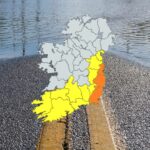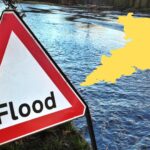
River Nitrogen Levels Rise in Early 2025, EPA Reports

The Environmental Protection Agency (EPA) has reported a 16% rise in nitrogen levels in Irish rivers during the first half of 2025 compared with the same period in 2024.
The findings come from the EPA’s Early Insights Nitrogen Indicator, based on monitoring data from 20 major rivers.
Nitrogen concentrations remain particularly high in the southeastern half of the country, where agriculture is the main source. The EPA warns that targeted and sustained measures are needed in these higher-risk, freely draining farming areas to reduce nitrogen runoff and improve aquatic ecosystems.
Dr Eimear Cotter, Director of the EPA Office of Evidence and Assessment, said, “Agriculture is the primary source of nitrogen in Irish rivers. While progress has been made, it is disappointing to see levels rise in early 2025 after reductions in 2024. Sustained, targeted action is essential to protect our waters.”
The EPA’s Farm and Landscape Measures for Agriculture (FLAG) map helps identify high-risk areas and the types of interventions required. The full Early Insights Nitrogen Indicator report is available on the EPA website.
The EPA carries out a full assessment of Ireland’s water quality every three years. The latest assessment was published in October 2022, with the next covering 2019–2024 due in the final quarter of 2025. Excess nitrogen and phosphorus can trigger overgrowth of plants and algae, reduce oxygen levels, and harm aquatic life. Agriculture is the main contributor, with wastewater also playing a role. Nitrate concentrations above drinking water standards pose health risks, particularly for young children.
Share this WeathÉire story:







